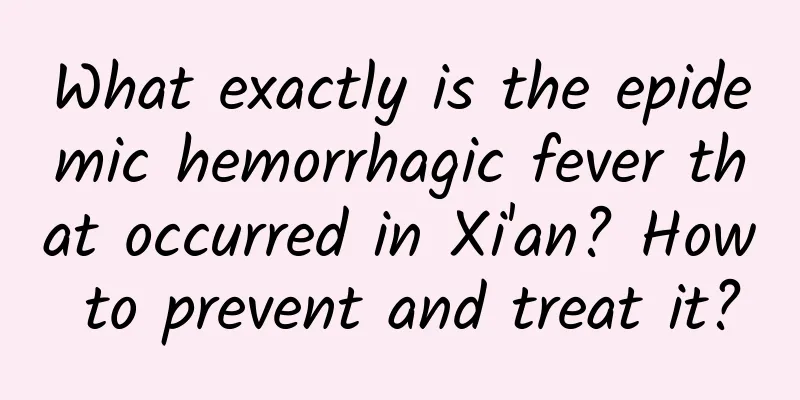What causes prickly heat in the genitals?

|
Prickly heat is a disease that infants and young children are very prone to, and its biggest characteristic is itching. However, some women find that they have prickly heat on their genitals, and they must be very concerned about what is going on? In fact, the genitals are not caused by prickly heat, but may be caused by bacterial vaginosis, which is a common gynecological disease. You need to understand the symptoms and make a judgment based on your own situation. Let’s take a closer look below. Clinical manifestations 10% to 50% of patients are asymptomatic, while those with symptoms complain of grayish-white leucorrhea with a fishy odor, vaginal burning and itching. Most patients with this disease are women of childbearing age. The disease has a slow onset and the subjective symptoms are not obvious, with the main manifestation being increased leucorrhea. The examination of vaginal secretions has the following characteristics: ① The pH value reaches 5.0-5.5, which is higher than normal. ② The leucorrhea is gray or gray-green, homogeneous, with a paste-like consistency, and may contain bubbles. ③There is a foul smell like rotten fish. The odor of women becomes worse after menstruation or sexual intercourse, and their sexual partners' genitals may also emit the same odor. ④ Patients with combined Trichomonas or Candida infection may experience vulvar itching, vaginal burning sensation, or pain during sexual intercourse. This disease can often be combined with other vaginal sexually transmitted diseases, and its clinical manifestations may vary depending on the comorbidities. When combined with gonococcal infection, vaginal discharge will be obviously purulent and urinary tract irritation symptoms such as dysuria and dysuria may occur; when combined with Trichomonas infection, foamy vaginal discharge may appear, and itching may be aggravated and extremely itchy; when combined with Candida infection, vaginal discharge may appear curd-like or tofu-like. treat 1. General treatment Keep the vulva clean and dry and avoid scratching. Do not eat spicy foods. Change your underwear frequently and wash it with warm water. Do not mix it with other clothes to avoid cross infection. 2. Medication (1) Metronidazole is currently considered to have reliable therapeutic effects and should be taken twice a day for 7 consecutive days. (2) Methicillin (clomiphene) is used for 3 days. (3) Thiamphenicol (Thiamycin) is effective against a variety of Gram-negative and Gram-positive bacteria, and has a good effect on anaerobic bacteria, so it can also be used. (4) Cleansiacin and ampicillin can also be used. In recent years, it has been advocated that no treatment is needed for asymptomatic people. 3. Local therapy Topical medications can be used for treatment, such as metronidazole suppositories, once a night for 7 consecutive days. 4. Treatment of comorbidities If other pathogens are detected, use medications targeting those pathogens to avoid the abuse of antibiotics. Pay attention to the medication for systemic conditions, and provide support and immunotherapy at the same time, and pay attention to adverse drug reactions. 5. Partner therapy Sex partners are treated at the same time. |
<<: Does it hurt to breastfeed after giving birth?
Recommend
Can I eat hawthorn during menstruation?
Hawthorn is a delicious food. Many people like to...
Why is the pregnancy line thin at the top and thick at the bottom?
After pregnancy, the expectant mother's body ...
Can I have a boy during ovulation?
In fact, many couples hope to have both a son and...
It can cure diseases, cause diseases, and even "control" people's brains. How do intestinal flora have such powers?
Introduction: Gut microbes are called the second ...
How to treat kidney deficiency in women?
As we all know, kidneys are very important for me...
How often should you take a bath in winter? It turns out that there are some rules for taking a bath!
The strongest cold wave is coming Snow has starte...
Why is it difficult to have a clean period?
Menstruation, also known as menstruation, when a ...
Here’s what you need to know about AIDS!
Here’s what you need to know about AIDS! Tongguan...
A guide for diabetics to spend the summer safely: Check out these 7 tips
Summer is the season when diabetics are most like...
What does breast category 1 mean?
The Birads classification is a classification sys...
Is it harmful to women's health to float their hands?
We all know that men can have floating hands, but...
TCM treatment of gynecological inflammation
Gynecological inflammation is also a common disea...
Does "age odor" exist? Do elderly people have a special smell?
Leviathan Press: Many people have probably smelle...
What anti-inflammatory drugs should I take for vulvar itching
Because of the special structure of female genita...
The more severe the morning sickness, the healthier the baby
After 5-6 weeks of pregnancy, expectant mothers w...









